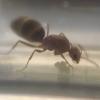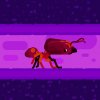So I can figure out when some colonies of ants have a nuptial flight by watching their nest. The problem is I don't know where they are flying to! Honestly I can't even tell what direction they are flying. Any tips?
- Formiculture.com
- Forums
- Gallery
- Members
- Member Map
- Chat

























